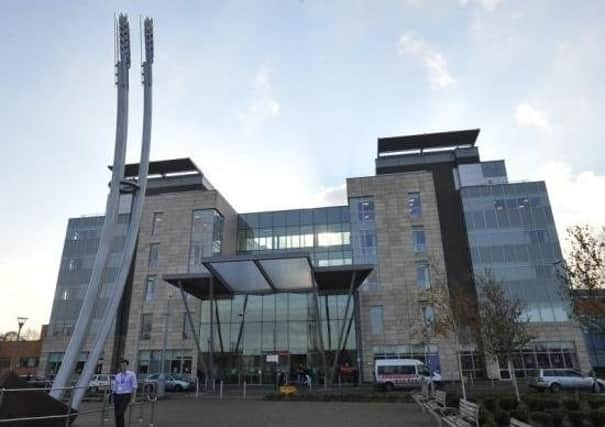New statistics reveal numbers of NHS staff in Peterborough area having to take sick leave for coronavirus-related reasons


Figures reported by NHS organisations on staff sickness absence linked to COVID-19 have been published for the first time today.
The NHS sickness absence rates up to May 2020 analyse sick leave related to coronavirus among NHS staff during March, April and May.
Advertisement
Hide AdAdvertisement
Hide AdThe details have been broken down into staff groups, region and NHS organisation and by reason for sickness absence, extracted from the Electronic Staff Record, which is used to record absence among NHS staff. Sickness absence rate is calculated by dividing the sum total sickness absence days (including non-working days) by the sum total days available per month for each member of staff.
Across the East of England, 14.5 per cent of staff sick days were recorded as being due to Covid-19 during March this year. That rose to 35.9 per cent in April putting the region only behind the hardest hit London and South East areas, then dipped to 25.6 per cent by the end of May, although that overtook London to become the second worst hit region that month marginally behind the South East (25.8 per cent).
This illustrates the concerns health chiefs have about the Test and Trace system needing to be fully functioning to surmount staff absence pressures as the autumn/winter peak season approaches.
Within North West Anglia NHS Trust, which runs the city’s hospitals, that percentage of sick leave rate due to covid was 24.4 per cent in March, rising to an alarming 42.4 per cent in April, only dropping slightly to 38.3 per cent by the end of May. By comparison, the Cambridgeshire and Peterborough NHS Foundation Trust only saw 11.9 per cent of staff sick days being due to Covid in March, just 2.5 per cent in April, rising to 9.7 per cent in May.
Advertisement
Hide AdAdvertisement
Hide AdThe East of England Ambulance Trust reported 0.1 per cent of staff sickness leave being due to the virus in March, 3.1 per cent in April, but a massive jump to 25.7 per cent in May. Cambridgeshire Community Services NHS Trust recorded its rate as 11.9 per cent in March, 16.6 per cent in April and 5.7 per cent in May.
To put the figures in perspective, the overall average sickness absence rate within the NHS workforce for England was 4.7 per cent in May (4.8% in East of England). This was down from 6.2 per cent in April 2020 (6.32% in East of England) and slightly higher than May 2019 (4.0 per cent). In North West Anglia Trust overall sickness rates were 4.94% in March, 6.27% in April and 5.22% in May.
Generally, ambulance trusts had the highest sickness absence rate at 5.3 per cent, down from 7.3 per cent in April 2020. East of England Ambulance Trust saw higher than average overall sickness rates of 8.02% in March, 8.48% in April and 6.52% in May. Clinical Commissioning Groups had the lowest sickness absence rate at 1.8 per cent.
Support to doctors, nurses and midwives reported the highest sickness absence rate at 6.7 per cent in May, down from 8.5 per cent in April 2020. Support to ambulance staff had the highest rate in April 2020 at 8.6 per cent.
Advertisement
Hide AdAdvertisement
Hide AdHospital practitioners and clinical assistants were the least affected.
Anxiety, stress, depression and other psychiatric illnesses is consistently the most reported reason for sickness absence in England’s health services, accounting for 510,281 full time equivalent days lost and 28.3 per cent of all sickness absence in May 2020. This is up from 20.9 per cent in April 2020.
A total of 340,900 full time equivalent days (from a total of 1,800,000 lost FTE days) were lost in England due to Covid-19 related sickness absence in May 2020, equating to 18.9 per cent of all absences recorded. This is compared to 30.6 per cent in April 2020 and 15.9 per cent in March 2020.